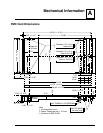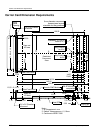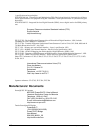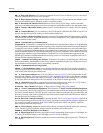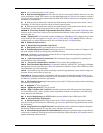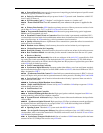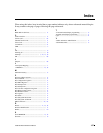
Glossary
124 Interphase Corporation
ITU-T International Telecommunication Union Telecommunication Standardization Sector Interna-
tional body that develops worldwide standards for telecommunications technologies. The ITU-T carries out
the functions of the former CCITT.
J1 Japanese transmission standard
LAN Local-Area Network High-speed, low-error data network covering a relatively small geographic
area (up to a few thousand meters). LANs connect workstations, peripherals, terminals, and other devices in
a single building or other geographically limited area. LAN standards specify cabling and signaling at the
physical and data link layers of the OSI model. Ethernet, FDDI, and Token Ring are widely used LAN tech-
nologies.
LANE LAN Emulation Technology that allows an ATM network to function as a LAN backbone. The
ATM network must provide multicast and broadcast support, address mapping (MAC Address-to-ATM), SVC
management, and a usable packet format. LANE also defines Ethernet and Token Ring ELANs.
LAPB Link Access Procedure, Balanced. Data link layer protocol in the X.25 protocol stack. LAPB is a
bit-oriented protocol derived from HDLC.
LEC LAN Emulation Client Entity in an end system that performs data forwarding, address resolution,
and other control functions for a single ES within a single ELAN. An LEC also provides a standard LAN ser-
vice interface to any higher-layer entity that interfaces to the LEC. Each LEC is identified by a unique ATM
address, and is associated with one or more MAC Addresses reachable through that ATM address.
LECS LAN Emulation Configuration Server Entity that assigns individual LANE clients to particular
ELANs by directing them to the LES that corresponds to the ELAN. There is logically one LECS per admin-
istrative domain, and this serves all ELANs within that domain.
LED Light Emitting Diode A semiconductor device used to provide visual indications, used in place of an
incandescent light. Also a semiconductor device used to transmit light into a fiber.
LES LAN Emulation Server Entity that implements the control function for a particular ELAN. There is
only one logical LES per ELAN, and it is identified by a unique ATM address.
LMI Local Management Interface Set of enhancements to the basic Frame Relay specification. LMI
includes support for a keepalive mechanism, which verifies that data is flowing; a multicast mechanism,
which provides the network server with its local DLCI and the multicast DLCI; global addressing, which gives
DLCIs global rather than local significance in Frame Relay networks; and a status mechanism, which pro-
vides an on-going status report on the DLCIs known to the switch. Known as LMT in ANSI terminology.
MAC Address Standardized data link layer address that is required for every port or device that connects
to a LAN. Other devices in the network use these addresses to locate specific ports in the network and to create
and update routing tables and data structures. MAC addresses are 6 bytes long and are controlled by the IEEE.
Also known as a hardware address, MAC-layer address, and physical address.
MCC Multichannel Communication Controller
MiniDIN Miniature multi-pin connector.
MUX Multiplexer Combines multiple signals for transmission over a single line. The signals are demul-
tiplexed, or separated, at the receiving end
NT1 Network Termination 1 A device that provides the interface between customer premises equipment
and central office switching equipment.
NVRAM Nonvolatile RAM RAM that retains its contents when a unit is powered off.
OC3 Optical Carrier 3 Physical protocol defined for SONET optical signal transmissions. OC3 signal
levels put STS frames onto multimode fiber-optic line at at 155.52 Mbps.
OSI Open System Interconnection International standardization program created by ISO and ITU-T to
develop standards for data networking that facilitate multivendor equipment interoperability.
PCI Peripheral Component Interconnect A high-performance multiplexed address and data bus. Sup-
porting 32-bit with optional 64-bit data transfers, the PCI bus is intended to be an interconnect between
peripheral controllers, peripheral add-in boards, and processor/memory systems. The PCI bus operates at up
to 33 MHz, providing burst transfer rates up to 132 MBps 32 bits wide, or up to 264 MBps 64 bits wide.
PDN Public Data Network Network operated either by a government (as in Europe) or by a private con-
cern to provide computer communications to the public, usually for a fee. PDNs enable small organizations
to create a WAN without all the equipment costs of long-distance circuits.




